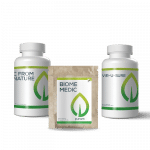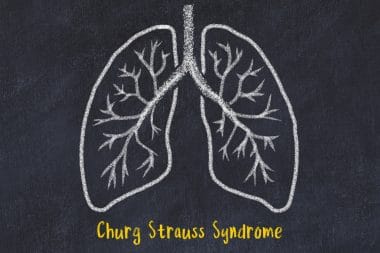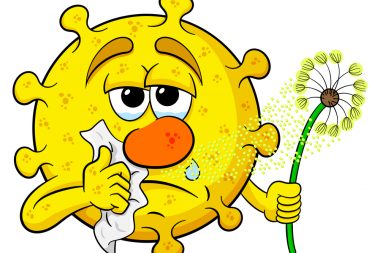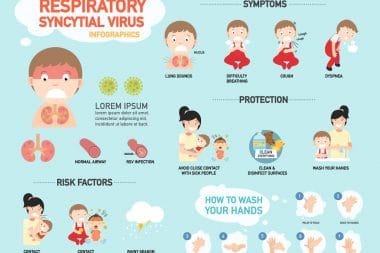Nasal polyps are a very common condition that is when polyps form on the lining of your nose. They are soft, painless, noncancerous growths that resemble almost like a tiny cyst. They grow on the lining of your nasal passages, hanging down in a teardrop or grape shape. There are more than three million cases in the United States every year.Â
Since nasal polyps that are small may be asymptomatic, it is almost hard to know how common nasal polyps even are. Nasal polyps tend to be more common in men than women, and can occur at any age, though they usually happen in adulthood. Nasal polyps are usually found in the sinuses near the eye, nose and cheekbones. If you have nasal polyps on one side of your sinuses chances are you have them on both.Â
SymptomsÂ
Nasal polyps can make it feel as though you have nasal congestion that doesn’t seem to go away. Along with a runny nose, you may also feel as though you have difficulty breathing through your nose.Â
Nasal polyps can also cause a decreased sense of smell or taste. Postnasal drip, cough, facial pain, and sinus pressure are also symptoms of nasal polyps. Headaches, itchy eyes, double vision, snoring and nosebleeds as well are associated with nasal polyps.Â
In severe cases the polyps may cause sleep apnea, asthma attacks, and repeated sinus infections.Â
Risk FactorsÂ
Nasal polyps occur when the lining of your nose, the nasal mucosa, becomes inflamed. With long lasting irritation the lining of your nose develops the polyp. People with certain types of preexisting conditions have a higher risk of developing nasal polyps.Â
- People who get chronic sinus infections tend to have more nasal polyps. Someone who suffers from hayfever, asthma, cystic fibrosis, or Churg-Strauss syndrome all have a higher risk of developing nasal polyps as well.Â
- Having a sensitivity to aspirin or ibuprofen can increase your risk.Â
- Nasal polyps may be hereditary.Â
It is not yet found out exactly why some people develop them more than others, other than the fact that people with these conditions seem to also associate with nasal polyps.
Diagnosis Â
Nasal polyps can be easily diagnosed. Your doctor will first want to take a full medical history, listen to your symptoms before progressing on how they want to diagnose.Â
- A nasal endoscopy can be done. This is when a small tube is inserted in your nose with a tiny camera on the end so that the doctor can see far up into your sinuses. This is a noninvasive procedure that can be done at an office of an ENT, ear nose, throat doctor.Â
- A CT scan can be done as well and the polyps will show up there. Sometimes repeated CT scans need to be done in order to monitor if the polyps are growing or not.Â
- If your doctor believes that your allergies are the cause behind your polyps, then your doctor may want to do an allergy skin prick test to see what allergens bother you the most.Â
- If you are a child and nasal polyps are present, your doctor may want to do a cystic fibrosis test.Â
TreatmentÂ
There are multiple ways you can treat nasal polyps. Some that are tiny and causing no symptoms can sometimes be left alone until they grow or start causing symptoms. The growth rate of polyps varies from person to person.Â
- Steroids can be given to help stop the growth of the polyps, these steroids can be nasal sprays, or tablets. Either can work on the polyps to keep them from growing any larger.Â
- Next your doctor may prescribe other medications, such as an antihistamine.Â
- One of the most common treatments though is surgery. A surgeon can go in and do a polypectomy, which is where they literally scrape away at the nasal tissue in your nasal passages to scrape out all the polyps. This is usually done when other treatments are no longer working.Â
- Treatment for nasal polyps is to try and decrease the size, as well as prevent new polyps from growing, or to stop them from growing larger.Â
The trouble with nasal polyps is once you have them, no matter what course of treatment you do, they usually come back. Â
Lifestyle Prevention
There are some extra lifestyle changes you can do to help prevent nasal polyps or decrease the likelihood of them recurring.Â
- Make sure to manage your allergies and asthma.Â
- Stay away from nasal irritants, whether that is dust, pet hair, tobacco smoke, or other allergens. Humidify your house.Â
- Humidity is a tricky thing to keep normal in your home sometimes. Too humid can be just as bad as too dry. If your house is too dry, you will want to invest in a humidifier to keep the air moist. If your house is too humid you can get a dehumidifier, that will help suck some of the excess moisture out of your home. A good range of humidity in a house is between 30-50% humidity. You can get humidity gages to track what your humidity levels are in your home.Â
- Another thing you can do that can be helpful is nasal rinse. This can be with a saline solution to rinse out your sinuses. This can be done a couple times a week if needed. Â
Conclusion
Some people are more prone to nasal polyps than others. Sometimes since they are so tiny and don’t cause any symptoms it is really hard to know how many people have nasal polyps. There are treatment options to help stop nasal polyps from growing, if medication or steroid treatments don’t work a polypectomy can be done to scrape away the nasal polyps. Usually nasal polyps will occur though, so doing somethings to keep your nose healthy may help prevent them from coming back too quickly or growing too fast.Â
READ MORE:Â What Makes Our Sinuses Uncomfortable?
Nose always running or always clogged? It could be Nasal Polyps! #HealthStatus
Know the symptoms of Nasal Polyps:Â continuous nasal congestion, runny nose, difficulty breathing, decreased sense of taste and smell, cough, facial pain, headache, itchy eyes, double vision, snoring, nose bleeds, repeated sinus infections
Sources:
https://www.mayoclinic.org/diseases-conditions/nasal-polyps/symptoms-causes/syc-20351888
https://www.healthline.com/health/nasal-polyps#diagnosis
https://my.clevelandclinic.org/health/diseases/15250-nasal-polyps
https://www.webmd.com/allergies/nasal-polyps-symptoms-and-treatments
https://www.hopkinsmedicine.org/health/conditions-and-diseases/nasal-polyps
https://www.medicalnewstoday.com/articles/177020#treatment
https://medlineplus.gov/ency/article/001641.htm









Reply